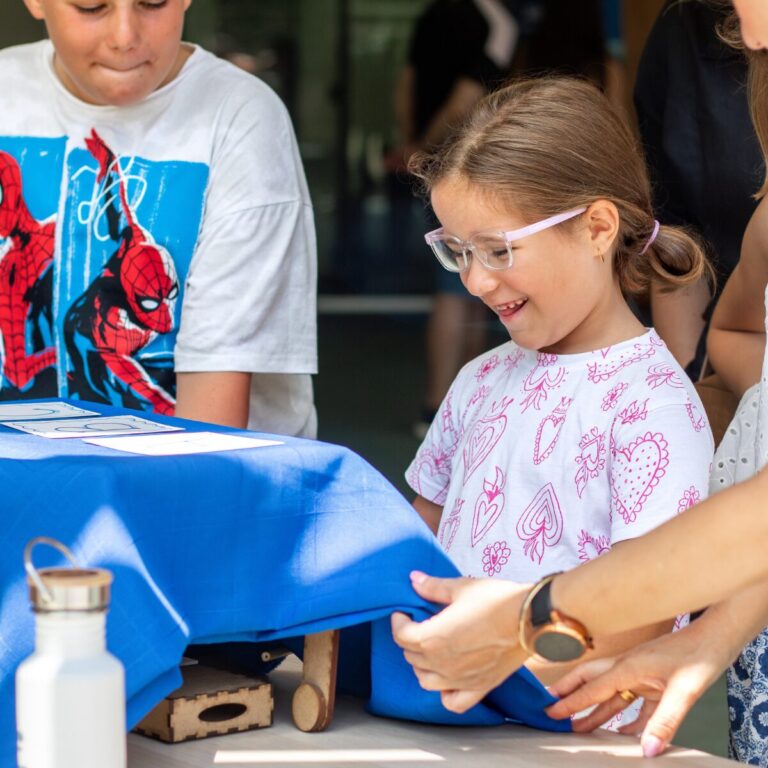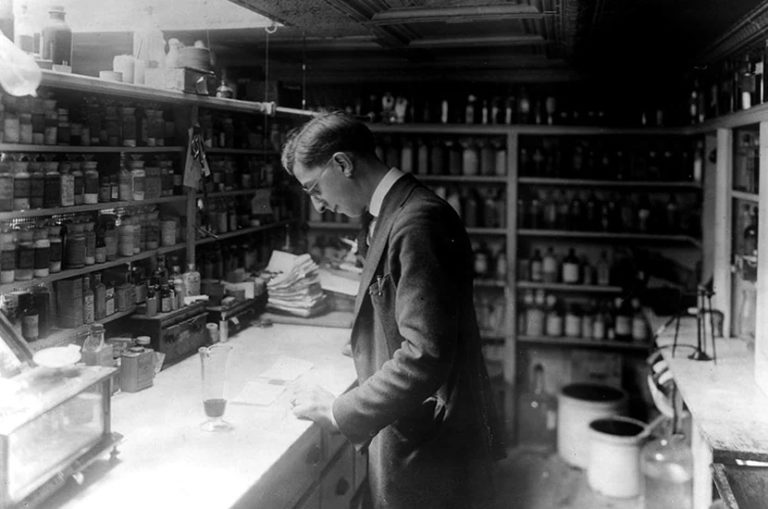The Value of Basic Research

At the World Ocean Summit in Lisbon this year, numerous leaders and presenters discussing the myriad threats facing our ocean and planet demanded of their audiences that what we need are more solutions, not more knowledge. Climate change is too pressing a problem to sit around and think about it anymore, they said. We have to ACT NOW.
At a guess, there were people in 1957 who felt a similar sense of urgency when the Soviet Union launched Sputnik 1 into orbit and the threat of nuclear war became orders of magnitude more real. With satellites overhead promising total global destruction at the press of a button, who thinks sitting around a lab bench or discussing information processing is a good idea?
Fortunately for mankind, President Dwight D. Eisenhower did. In 1958, facing significant political and public pressure to channel every resource into building satellites, Eisenhower authorized the creation of the Advanced Research Projects Agency (ARPA) with the express purpose of conducting high-risk, high-gain, basic research. It was a bold, forward-thinking decision that catapulted innovation and scientific understanding and revolutionized our world. Basic research supported by ARPA over the past six decades, built upon the millennia-old mountain that is our existing knowledge base, laid the groundwork for the personal computer, the internet, GPS, weather satellites, virtual reality and Moderna’s Covid-19 mRNA vaccine.
Ed Catcall, founder and former CEO of Pixar recalls how striking a decision this investment in basic research was in his book Creativity, Inc. He notes, “[ARPA’s] mission was ostensibly peaceful: to support scientific researchers in America’s universities in the hopes of preventing what it termed ‘technological surprise’…Looking back, I still admire that enlightened reaction to a serious threat: we’ll just have to get smarter.”
Climate change and biodiversity loss and the threats both pose to life on earth are serious threats indeed. Few these days deny we should be channeling our minds and resources to addressing them. But within this ‘call to action’ there remain many outspoken spokespeople who rebuke thinking over doing. Or who suggest that researching and thinking aren’t actions. Such messages and mindsets are misleading and even dangerous, for they overlook a fundamental part of problem-solving: learning.
The reality is, if we already knew everything we needed to know in order to solve the climate crisis and biodiversity loss…well, we’d have the solution by now, wouldn’t we? Certainly, we wouldn’t be calling it a crisis. More than anything, and just as America did when faced with the threat of nuclear war, if we are to have any chance of managing or altering the course of climate change, we need to get smarter.
Getting smarter is the primary objective of basic research. The human race has benefitted almost beyond comprehension by the accumulation of knowledge from basic research. This we should know intrinsically since science is a process of discovery and discovery leads to more knowledge, better questions and new ideas. However, following descriptions of the research we do at MARE-Madeira, numerous people have asked me, “So what?” (The frequency with which I am asked this question is, in fact, the primary motivation for this article.) And so I set about compiling examples from colleagues, friends and family to demonstrate more clearly the power of basic research. From basic research investigating heredity and the structure of DNA we’ve been able to vastly improve agricultural production and medicine. From basic research in chemistry has emerged new materials like nylon. From theoretical physics came the discovery and understanding of particles now used in medical diagnosis scanning and lasers. These discoveries, provided in more detail at the end of this article, are only the most obvious examples – the basic research with the most immediate links to technologies and societal impact. Of equal importance is the slow accumulation of knowledge over time that forms the basis of every innovation, every public health and conservation policy and every hope for the future we have today.

It’s a simple question, really, ‘So what?’ As such, maybe it doesn’t need all these examples. Maybe simple questions are best answered with simple answers. So what is that through basic research we get smarter.
The importance of getting smarter is particularly relevant for the ocean. The ocean plays an immense role in carbon storage and in sustaining life on Earth through the provision of oxygen, food and global temperature regulation. These fundamental functions of the ocean are complex and there are many things we still do not understand about how they work. Many are looking to the ocean for solutions to climate change — can we grow immense seaweed farms to take carbon dioxide from the atmosphere? Can we deposit our carbon in the sea floor? Can we take more resources from the ocean to produce ‘green’ technologies that will save us?
The reality is, we don’t know. There is little about the planet that we are as ignorant about as we are about the ocean. Historically speaking, we are about as sophisticated in our understanding of the ocean today as we were about medicine in the early 20th century. Which is to say, we have some expertise and concerted efforts are being made, but broadly speaking our knowledge base is such that even informed decisions on how to manage our ocean’s crises are not very informed at all.* And just like the many poorly-informed medical interventions of the last century (using mercury as a medicine, performing lobotomies to treat mental illness, bloodletting…), we risk through our actions making the ocean and climate crisis worse, not better.
More than ever and as history shows us, we need to invest in research so that we can face our current and emerging threats with our greatest asset: knowledge. At MARE-Madeira we’re doing our best to learn more about the climate-related and human pressures on ocean ecosystems and to answer fundamental questions about how ocean life, habitats and systems interact – answers that will inform our world’s conservation, restoration and climate change mitigation efforts. If you believe in the value these things bring to the world, then join us – ACT NOW! as they say – by partnering with us, working with us, funding our non-profit research or sharing our messages with your network. For if we’re going to solve this crisis, yes, we’ll need more trees and nature reserves and new technologies and empowered communities(!), for sure we will. But we’re also going to need to get smarter.
*Like the attempts to solve coral reef death & destruction by dumping thousands of used tires onto the ocean floor to create artificial reefs — the ocean conservation equivalent of bloodletting. (If you’re wondering, no, it hasn’t worked.)
Discoveries from basic research that have changed our world:
Principles of inheritance: Gregor Mendel’s famous pea plant experiments in the 1800’s established the principles of heredity and inheritance and the existence of recessive and dominant traits. These discoveries improved agricultural breeding and our understanding of hereditary illness and marked the birth of the study of genetics, from which innumerable medical treatments continue to emerge.
The structure of DNA: Our molecular understanding of DNA’s structure paved the way for scientific and medical techniques such as genome sequencing, genetic engineering and gene therapy and life-saving medicines such as human insulin and antibody-based cancer treatments.
General Relativity: Albert Einstein’s Theory of General Relativity revealed that gravity affects time, such that clocks orbiting in space proceed at a different rate as those on Earth’s surface. This finding was critical for the development of GPS, for which small differences in timing had to be accounted for to enable the high degree of precision required for this technology’s location and tracking capabilities.
Information Theory: This mathematical theory developed by Claude Shannon at Bell Labs made possible the explosion in digital communications, data compression and encryption in the second half of the 20th century and our ongoing shift to ever-greater digitalization.
Nylon: Wallace H. Carothers, in his basic research into polymerization at the DuPont laboratory, created a long-chain polymer that was both elastic and durable. His discovery would be manipulated into the commercially viable material that is now the basis of many textiles, machine parts and other manufactured products today.
The positron: The discovery of the positron (the antiparticle of electrons) was made possible from the theoretical physics research of Paul Dirac, Robert Oppenheimer, Hermann Weyl, Richard Feynman, John Wheeler and others who predicted its existence. Positrons are now used in Positron Emission Tomography (PET), a medical diagnosis scanning technique commonly used in oncology to detect tumors and metastases, and in neurology to measure blood flow to the brain.
Population inversion of particles: Albert Einstein established the possibility of population inversions (wherein more particles are in a higher excited state than in a lower state) as a means for the emission of electromagnetic radiation. This work was applied fifty years later in the invention of the laser, now used for fiber-optic communication, the manufacturing of semiconductor chips, surgery and DNA sequencing.
The Turing Machine: Alan Turing’s work into the mathematical logic behind a computational device was highly influential in the development of computer science. His ‘Turing Machine’ (first described in 1936) was the model from which the computer, as we know and depend upon it today, eventually emerged.
Special thanks to David Griffiths, Gerard McCaul and Robert Esson in helping to compile this list.
Further reading
Catmull, Ed & Wallace, Amy. (2014). Creativity, Inc.: overcoming the unseen forces that stand in the way of true inspiration. New York, Random House.
Bryson, Bill. (2019). The body: a guide for occupants. New York, Doubleday.
Roberts, Callum. (2013). Ocean of life: how our seas are changing. London, Penguin.
Image credits: Nuclear Weapon Test Mike, courtesy of the National Nuclear Security Administration / Nevada Site Office (Public Domain, https://commons.wikimedia.org/w/index.php?curid=179754). Osborn Reef by Navy Combat Camera Dive Ex-East (Public Domain, https://commons.wikimedia.org/w/index.php?curid=7639120). Octopus scientist cartoon by Diane Esson.



